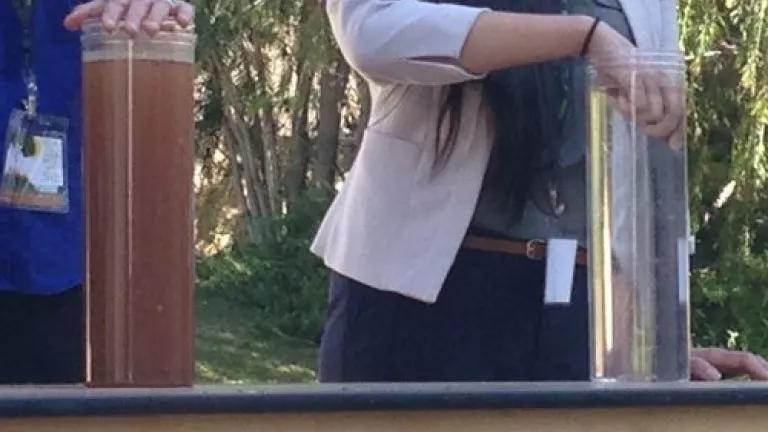
I grew up about as rural as you can get. My closest neighbors lived a half a mile away from me, and my road dead ended within a quarter of a mile from my house. When it was time for me to apply to college, I didn't even consider schools outside of Lincoln, Nebraska, population 268,763, which I decided was the biggest city I could ever tolerate.
A few years later, I was signing a lease in Los Angeles. The LA metro area has 7 times the inhabitants of my home state, and is 47 times bigger than Lincoln.
I guess I'm a full blown city girl now.
Despite living in a concrete jungle, soil is still important to my life and to every other city dweller's life. So I'm glad that February is the month during the International Year of Soils that we get to focus on how Soils Support Urban Life.
Soils Support Urban Farming
Healthy soils are a key component of a burgeoning healthy food future in our cities. NRDC Growing Green Award winner Tezozomac and "Guerilla Gardener" Ron Finely are living proof that cities are a new frontier of farming, and help us connect the dots between farming and food justice. And groups like Kiss the Ground, based in Venice, CA, encourage us to consider ways we can expand the urban farming movement even further, utilizing currently vacant or undeveloped properties to grow food.
Soils Support Flood-Free Cities
All of the pavement that's typically found in cities can pose serious flood risks for residents, and stormwater, which picks up all the nasty gunk that's on top of the pavement, is still one of the biggest contributors to beach pollution across the country. Replacing some of that pavement with healthy soil is one way to reduce rainfall related pollution. Soil can be a great sponge. It can soak up rainfall, helping to prevent flooding and pollution.
But the key word here is healthy--soils that aren't well tended and cared for can erode and exacerbate pollution problems. Take a look at what a difference soil health makes:
In this experiment by Ray Archuleta at the Urban Soil Carbon Water Summit this week, two volunteers each put a "dirt clod" into a water tank at the same time. The soil on the left was degraded, and fell apart almost immediately when it was inserted into the water. In real life, when rain hits soil like that, the degraded soil would be washed downstream with the stormwater that's carrying it.
The soil on the right was healthy, and absorbed the water instead of disintegrating. That's because the healthy soil had large pore spaces--like a sponge-- where it could store water. When rain hits healthy soil like this, it's able to soak in, preventing erosion and pollution. You can watch Ray perform the entire experiment here.
Soils Support Water-Secure Cities
California is currently in the midst of an epic drought, yet each year we are sending billions of gallons of rainwater out to sea, and polluting our beaches in the process. Capturing some of that rainwater and using it to augment our local water supplies could help our cities become more water-secure, something that is desperately needed because many of the sources that California communities receive water from are not sustainable. If you live in California, check out where your water comes from using NRDC's interactive tool.
However, NRDC estimates that California's coastal cities could potentially capture up to 630,000 acre-feet of rainwater annually--that's enough to provide water to 1.2 million families for a year! Healthy, spongy soils are a key component of the green infrastructure solutions that will help us capture and use this potentially significant source of water.
So even if you live in a city, soils are still vitally important. Soils support urban life!

